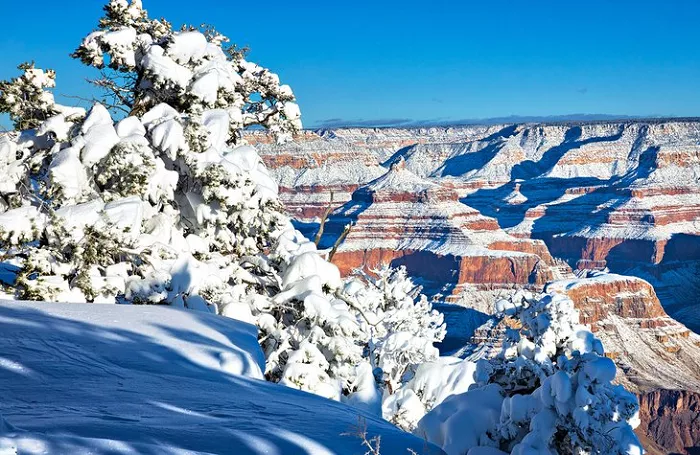Arizona is often associated with its scorching deserts and sun-drenched landscapes. However, this southwestern state also experiences snowfall, particularly in its higher elevations. This article delves into the various facets of snow in Arizona, exploring its geographical distribution, cultural significance, economic impact, ecological effects, and more.
Geographical Overview of Arizona
1. Diverse Topography
Arizona’s landscape is a tapestry of deserts, mountains, plateaus, and forests. The state’s elevation ranges from about 70 feet above sea level at the Colorado River to over 12,000 feet at Humphreys Peak. This variation in elevation contributes to the state’s diverse climate zones.
2. Climate Zones
While much of Arizona is arid or semi-arid, the higher elevations in the northern and eastern parts of the state experience a more temperate climate, with cooler temperatures and increased precipitation, including snow. These areas include the Colorado Plateau and the White Mountains.
Snowfall Distribution in Arizona
1. Snow-Prone Regions
Snowfall in Arizona is predominantly found in the northern and eastern highlands. Key areas include:
- Flagstaff: Situated at approximately 7,000 feet, Flagstaff is one of the snowiest cities in the U.S., receiving over 100 inches of snow annually.
- White Mountains: This region, including towns like Show Low and Pinetop-Lakeside, sees significant snowfall, supporting winter sports and recreation.
- Mogollon Rim: A prominent geological feature, the Rim area experiences regular snowfall during winter months.
2. Limited Snowfall Areas
In contrast, southern and western Arizona, including cities like Phoenix, Tucson, and Yuma, receive little to no snowfall due to their lower elevations and desert climates. For instance, Phoenix has recorded measurable snowfall only a few times in its history.
Cultural Significance of Snow in Arizona
1. Winter Recreation
Snowfall in Arizona has given rise to a variety of winter recreational activities. Residents and tourists alike engage in skiing, snowboarding, sledding, and snowshoeing in areas like the Arizona Snowbowl and Sunrise Park Resort.
2. Community Events
Snow-related events and festivals are common in snow-prone regions. These gatherings celebrate the winter season and foster community engagement.
3. Indigenous Perspectives
For some Native American tribes in Arizona, snow holds spiritual significance. However, the use of artificial snow made from reclaimed water on sacred lands, such as those near the San Francisco Peaks, has sparked controversy and raised environmental and cultural concerns.
Economic Impact of Snow
1. Tourism Revenue
Winter tourism contributes significantly to Arizona’s economy. In 2023, snow-related activities generated approximately $55 million, supporting local businesses and employment.
2. Snowbird Migration
Arizona attracts “snowbirds”—individuals from colder regions who spend the winter months in the state’s milder climates. This seasonal population boost stimulates the economy, particularly in sectors like hospitality, retail, and healthcare.
Ecological Effects of Snow
1. Water Resources
Snowpack serves as a crucial water source for Arizona. As it melts, it replenishes rivers, reservoirs, and aquifers, supporting agriculture, wildlife, and human consumption.
2. Ecosystem Health
Snow influences the timing of plant growth and animal behaviors. Changes in snowfall patterns can disrupt these natural cycles, affecting biodiversity and ecosystem stability.
Climate Change and Snow Patterns
1. Decreasing Snowfall
Climate change has led to reduced snowfall and earlier snowmelt in Arizona’s highlands. These changes threaten water availability and increase the risk of wildfires.
2. Adaptive Measures
Efforts are underway to adapt to changing snow patterns, including improved water management strategies and investments in snowmaking technologies for ski resorts. However, these measures also raise environmental and cultural considerations.
Conclusion
While Arizona is renowned for its deserts and warm climate, snow is an integral part of the state’s environmental and cultural landscape, particularly in its higher elevations. Understanding the distribution, significance, and challenges associated with snow in Arizona is essential for residents, policymakers, and visitors alike.

